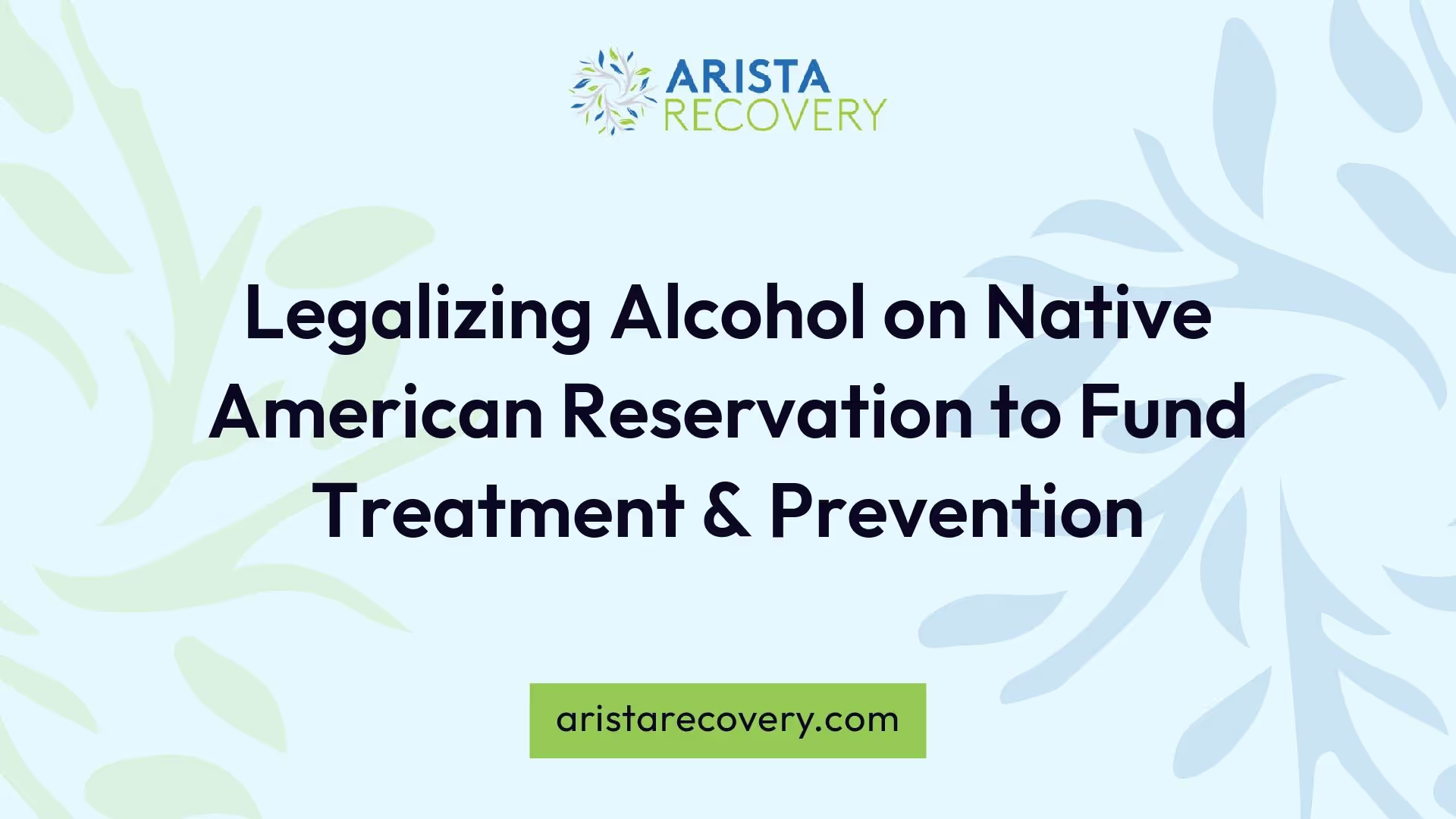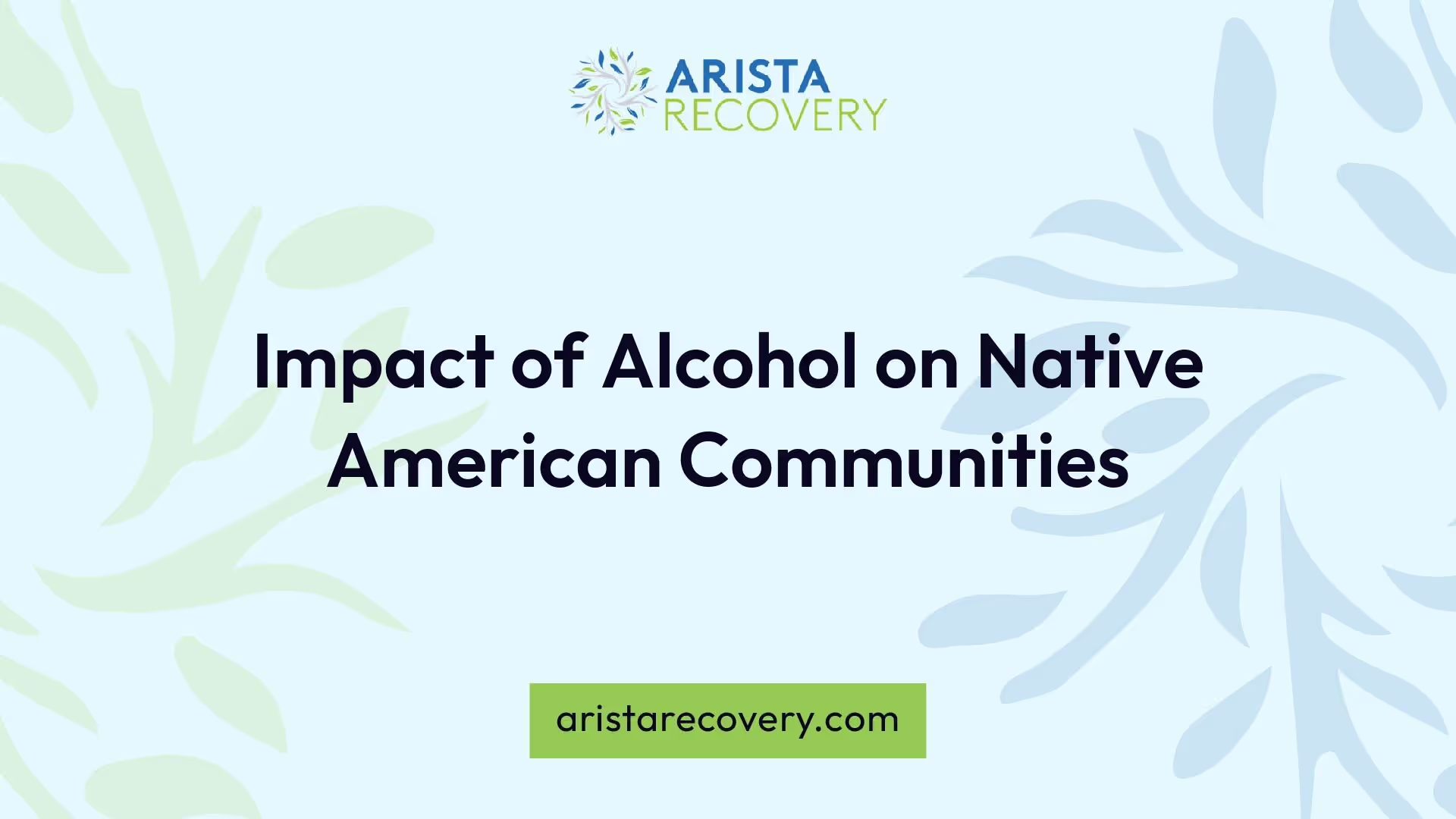Legalizing Alcohol on Native American Reservation to Fund Treatment & Prevention

Alcohol Policies on Native American Reservations

Historical Alcohol Prohibition
The history of alcohol prohibition on Native American reservations is marked by significant legal and social changes. Even after national prohibition ended with the 21st Amendment in 1933, many Native American nations continued to enforce strict bans on alcohol. By 1919, these prohibitions were formalized, and they remained in effect until 1953. It was only at this time that Congress allowed tribes to establish their own alcohol regulations, granting them the ability to repeal the prohibition on their lands.
Prior to this change, Native Americans faced legal restrictions on alcohol consumption, impacting their social customs and economic opportunities. The 1953 decision marked a turning point, permitting Native Americans to drink alcohol both on and off reservations. Despite this federal acknowledgment, various tribal nations, such as the Oglala Sioux Tribe, opted to maintain prohibitive measures on alcohol for public health and safety reasons.
Modern-Day Regulations
In contemporary times, the regulations regarding alcohol on Native American reservations vary widely. Following the 1953 change, tribal nations have the autonomy to decide whether to allow alcohol sales and consumption within their communities. Some tribes have embraced alcohol sales as a means of generating revenue, capitalizing on the lower tax rates typically found on reservations. This can lead to increased availability of alcohol, which some argue presents a risk to those struggling with addiction.
YearEvent1919Prohibition is retained for Native American nations.1933National prohibition ends, but tribal bans persist.1953Federal law allows tribes to enact their own alcohol policies.
This autonomy can create a complex landscape where public health priorities clash with economic incentives. Despite the challenges, many communities are actively working to address alcohol-related issues through treatment funding and education on the potential risks associated with alcohol use. Each tribe has the responsibility to craft regulations that align with their cultural values and public health goals. The ongoing debate regarding legalizing alcohol on Native American reservations continues to shape these policies today.
Impact of Alcohol on Native American Communities

Alcohol-Related Issues
Alcohol use has had profound consequences on Native American communities. Various drinking styles have been reported among reservation residents, ranging from social drinkers to individuals facing significant alcohol addiction challenges. The illegal status of alcohol on some reservations has contributed to heavy drinking behavior, with the fear of being caught leading to problematic use (NCBI).
Mortality related to alcohol among American Indians is alarmingly high. Alcohol-related deaths are 2.4 to 3.2 times greater than those in the general U.S. population. Contributing factors include alcohol-specific causes and motor vehicle accidents. Alcohol-related causes account for 67.5% of total alcohol-involved deaths, highlighting the severity of this issue.
The accessibility of alcohol at lower costs on tribal reservations further exacerbates these problems, making it easier for individuals to engage in harmful drinking behaviors. Some tribes have implemented strict laws prohibiting the possession and sale of alcohol in an attempt to combat these issues.
Additionally, alcohol use disorders have been linked to various health problems, particularly among Alaska Natives. High rates of cirrhosis, dementia, suicide, and unintentional injuries have been observed, with alcohol use disorder cited as the leading cause of death for Alaska Native men and the sixth leading cause for women.
Strategies for Prevention
Effective prevention strategies are critical in addressing the impact of alcohol within Native American communities. Some of these strategies include:
Prevention StrategyDescriptionEducation on RisksImplement educational programs to inform community members about the dangers of alcohol use and its effects on health and families.FAS Research and PreventionPrioritize research and initiatives focused on fetal alcohol syndrome (FAS), which has been identified at elevated rates among some tribes. These efforts can include community workshops and outreach programs.Community Support ProgramsEstablish support groups and counseling services for individuals struggling with alcohol addiction. Peer support can greatly enhance recovery efforts.Strict Laws and EnforcementEnforce laws banning alcohol possession and sales on select reservations to discourage drinking and minimize associated issues (NCBI Bookshelf).Collaboration with Healthcare ProvidersWork with local health providers to offer treatment options and resources tailored to the needs of the community. Access to healthcare plays a crucial role in prevention and recovery.
By focusing on education, community involvement, and stricter regulations, Native American communities can begin to address and mitigate the detrimental effects of alcohol use. These strategies not only aim to reduce the prevalence of alcohol-related issues but also work towards fostering healthier communities.
Legalization Debate
The discussion surrounding the legalization of alcohol on Native American reservations encompasses various benefits and challenges. Understanding these aspects is essential for building effective policies that address community wellbeing and addiction treatment.
Benefits of Legalizing Alcohol
Legalizing alcohol can offer multiple advantages for Native American reservations.
BenefitDescriptionEconomic GrowthPotential for job creation and increased tax revenueFunding for TreatmentRevenue can support addiction treatment programsRegulation ControlAbility to shape policies to reduce alcohol-related harm
Challenges and Concerns
Despite the potential benefits, there are significant challenges and concerns related to legalizing alcohol.
ChallengeDescriptionAddiction RisksPotential increase in alcohol consumption problemsTension with State LawsCompliance with federal mandates can complicate enforcementCommunity DivisionDiffering opinions may lead to conflicts within the community
The legalization of alcohol on Native American reservations involves weighing potential economic benefits and funding opportunities against the backdrop of existing addiction concerns and community dynamics. Creating a balanced and informed approach is vital in addressing these complex issues.
Case Study: Pine Ridge Indian Reservation
Dry Reservation Status
The Pine Ridge Indian Reservation, located in South Dakota, is home to the Oglala Sioux Tribe. Since the end of Native American tribal prohibition, the reservation has remained dry, meaning that alcohol sales, possession, and consumption are forbidden. Despite a brief period in the 1970s when alcohol sales were permitted, a vote in 2013 reaffirmed the dry status of the reservation, and a subsequent vote planned for 2016 was canceled, maintaining the alcohol-free environment as of 2017 (NABCA).
YearEvent1970sAlcohol sales temporarily allowed2013Vote to allow alcohol sales, later decided to keep reservation dry2016Scheduled revote canceled2017Reservation remains alcohol-free
Efforts to Address Alcohol Issues
The decision to maintain the dry status reflects ongoing concerns about alcohol-related issues within the community. The Oglala Sioux Tribe has taken various measures to address these challenges effectively. Initiatives for treatment and prevention include establishing programs focused on education about alcohol abuse, community support networks, and alternative activities for youth to reduce the appeal of alcohol consumption.
Collaborations between the tribe and external organizations further aim to secure funding for various treatment programs. Federal law requires that Native American tribes adhere to state alcohol laws, which can complicate enforcement and community education efforts, but it also opens doors for collaboration on key issues such as alcohol education and safety (NABCA).
To facilitate better outcomes, the tribe has invested in local resources such as counseling services and outreach programs designed to assist individuals struggling with addiction. Emphasizing the importance of community well-being, these efforts highlight the tribe's commitment to addressing alcohol challenges while considering the cultural and social dynamics of the community.
Treatment and Prevention Initiatives
Addressing alcohol addiction within Native American communities requires a multifaceted approach that includes securing funding for treatment programs and implementing effective strategies tailored to the unique cultural context.
Securing Funding
Funding is crucial for establishing and maintaining treatment centers and providing essential services for individuals dealing with alcohol addiction. Financial support can be sought through various avenues, including:
A table summarizing potential sources of funding for treatment programs is provided below:
Funding SourceDescriptionGovernment GrantsFinancial assistance provided by federal or state governments for addiction treatment.Nonprofit PartnershipsCollaborations with organizations that offer funding and support for addiction recovery.Community Fundraising InitiativesLocal events and campaigns organized to raise funds for treatment centers.
Funding supports the development of culturally-sensitive programs. Alcohol problems can potentially be mitigated by integrating native beliefs and approaches into treatment plans (Northstar Behavioral Health).
Implementing Effective Strategies
Incorporating effective strategies is essential for addressing alcohol addiction in Native American communities.
By focusing on securing appropriate funding and implementing culturally sensitive and effective strategies, Native American communities can better address the challenges posed by alcohol misuse and addiction.
You’re not alone in this.
When mental health challenges and addiction intersect, it can feel isolating. At Arista, we offer compassionate, evidence-based, and trauma-informed care to help you heal, grow, and move forward.
You’re not alone in this.
When mental health challenges and addiction intersect, it can feel isolating. At Arista, we offer compassionate, evidence-based, and trauma-informed care to help you heal, grow, and move forward.
Support that moves with you.
You’ve taken a brave first step. At Arista Recovery, we’re here to help you continue with best-in-class care designed for long-term healing and support.
.webp)






